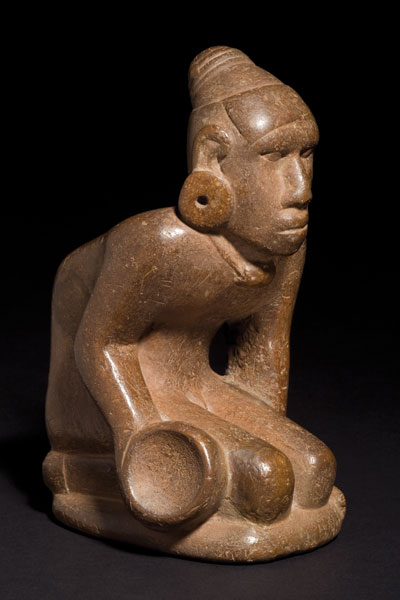
Included in my scholarly interests is the history of chivalric sports, which has made me sensitive to the influence that other elite sports and festivals have had. So I was really interested to read about the sport of "chunkey" as practiced by the Cahokia culture of North America during what we call the Middle Ages. Here are some excerpts from the on-line version of Archaeology.
I have been to the Cahokia site, and not only are there some surviving Cahokian "ziggurats" made of earth, but a great modern museum.The chief standing at the summit of the black, packed-earth pyramid raises his arms. In the grand plaza below, a deafening shout erupts from 1,000 gathered souls. Then the crowd divides in two, and both groups run across the plaza, shrieking wildly. Hundreds of spears fly through the air toward a small rolling stone disk. Throngs of cheering spectators gather along the sidelines and root for the two teams as they play chunkey, a game that had a significant role in organizing social and political life at Cahokia, the great prehistoric city that arose around A.D. 1050 near present-day St. Louis, Missouri.
...Many, possibly most, Midwestern, Southern, and Plains Indians were in one way or another entangled in a history that began at Cahokia. The evidence is often indirect, but it is compelling, and points toward a singular history-changing moment 1,000 years ago, when social life, political organization, religion, art, and culture were all utterly transformed in the middle of the Mississippi River Valley. At the epicenter of events was a radical new kind of social and political experiment: a planned capital city. Someone--or some governing body--designed one from scratch at Cahokia. The leaders superimposed a new plan directly over an old village and supervised the construction of great earthen pyramids, open plazas, and huge wooden buildings. Then they gained control over people living throughout the region, an unprecedented move in the history of ancient America north of Mexico.
A new culture developed at the city, perhaps inspired by Mesoamerican models. The people of Cahokia practiced human sacrifice, incorporated obelisk-like timber posts into their worship, told stories of superhuman men and women, used Mesoamerican-style flint daggers, and understood the cosmos in ways similar to Mesoamerican notions. They then spread this new way of life, which included intensified maize agriculture, across the Midwest and into the South and Plains with a religious fervor. Archaeologists refer to the culture as Mississippian, after the river that flows by many of its known sites.
One of the primary vehicles for the growth of this new civilization may have been Cahokian envoys who carried chunkey stones in one hand and war clubs in the other as they ventured into the hinterlands with the purpose of making peace or political alliances. These emissaries seem to have established and enforced a region-wide peace of sorts, a veritable Pax Cahokiana, an important element of which may have been the game of chunkey.
Timothy R. Pauketat is a professor of anthropology at the University of Illinois at Urbana-Champaign.
Image: Chunkey player.
No comments:
Post a Comment